The Role of Mobile Applications in Shaping Digital Transformation in Higher Education Among Generation I: A Bibliographic Study
Abstract
1. Introduction
- RQ1: What is the publication trend in DT using mobile apps in higher education for the I-Generation?
- RQ2: What are the influential publications in DT using mobile apps in higher education for the I-Generation?
- RQ3: What is the intellectual structure of DT using mobile apps in higher education for the I-Generation?
2. Methodology
3. Data Analysis
4. Result
4.1. Publication and Trend Analysis
4.2. Top Contributing Sources
4.3. Institutional Analysis and Global Research Collaboration
4.3.1. Top 10 Countries of Production
4.3.2. Sustainable Development Goals (SDGs) Analysis
4.3.3. Top Contributors
4.3.4. Citation Analysis
4.3.5. Co-Citation Analysis
4.3.6. Co-Word Analysis
4.3.7. Co-Authorship Analysis
4.3.8. Grouping of Research Issues and Analysis of Trends
5. Discussion
5.1. RQ1: What Is the Publication Trend in Digital Transformation Using Mobile Apps in Higher Education for the I-Generation?
5.2. RQ2: What Are the Influential Publications in Digital Transformation Using Mobile Apps in Higher Education for the I-Generation?
5.3. RQ3: What Is the Intellectual Structure of Digital Transformation Using Mobile Apps in Higher Education for the I-Generation?
5.4. Mobile Apps in Context: Comparing with Broader Educational Technology Research
6. Conclusions
Author Contributions
Funding
Data Availability Statement
Conflicts of Interest
References
- Vial, G. Understanding digital transformation: A review and a research agenda. J. Strateg. Inf. Syst. 2019, 28, 118–144. [Google Scholar] [CrossRef]
- Castro Benavides, L.M.; Tamayo Arias, J.A.; Arango Serna, M.D.; Branch Bedoya, J.W.; Burgos, D. Digital Transformation in Higher Education Institutions: A Systematic Literature Review. Sensors 2020, 20, 3291. [Google Scholar] [CrossRef]
- Farias-Gaytan, S.; Aguaded, I.; Ramirez-Montoya, M.S. Digital transformation and digital literacy in the context of complexity within higher education institutions: A systematic literature review. Humanit. Soc. Sci. Commun. 2023, 10, 386. [Google Scholar] [CrossRef]
- Kuleto, V.; Milena, I.P.; Stanescu, M.; Ranković, M.; Šević, N.P.; Păun, D.; Teodorescu, S. Extended reality in higher education, a responsible innovation approach for generation y and generation z. Sustainability 2021, 13, 1814. [Google Scholar] [CrossRef]
- Poláková, P.; Klímová, B. Mobile technology and generation Z in the English language classroom—A preliminary study. Educ. Sci. 2019, 9, 203. [Google Scholar] [CrossRef]
- Fernández, A.; Gómez, B.; Binjaku, K.; Meçe, E.K. Digital transformation initiatives in higher education institutions: A multivocal literature review. Educ. Inf. Technol. 2023, 28, 12351–12382. [Google Scholar] [CrossRef] [PubMed]
- Pechenkina, E. Developing a typology of mobile apps in higher education: A national case-study. Australas. J. Educ. Technol. 2017, 33. [Google Scholar] [CrossRef]
- James, W.; Oates, G.; Schonfeldt, N. Improving retention while enhancing student engagement and learning outcomes using gamified mobile technology. Account. Educ. 2025, 34, 366–386. [Google Scholar] [CrossRef]
- Lazaro, G.R.D.; Duart, J.M. Moving learning: A systematic review of mobile learning applications for online higher education. J. New Approaches Educ. Res. 2023, 12, 198–224. [Google Scholar] [CrossRef]
- Balci, S.; Secaur, J.M.; Morris, B.J. Comparing the effectiveness of badges and leaderboards on academic performance and motivation of students in fully versus partially gamified online physics classes. Educ. Inf. Technol. 2022, 27, 8669–8704. [Google Scholar] [CrossRef]
- Wang, X.; Zhang, R.; Wang, X.; Xu, D.; Tian, F. How Do Mobile Social Apps Matter for College Students’ Satisfaction in Group-Based Learning? The Mediation of Collaborative Learning. Front. Psychol. 2022, 13, 795660. [Google Scholar] [CrossRef]
- Donthu, N.; Kumar, S.; Mukherjee, D.; Pandey, N.; Lim, W.M. How to conduct a bibliometric analysis: An overview and guidelines. J. Bus. Res. 2021, 133, 285–296. [Google Scholar] [CrossRef]
- Ellegaard, O.; Wallin, J.A. The bibliometric analysis of scholarly production: How great is the impact? Scientometrics 2015, 105, 1809–1831. [Google Scholar] [CrossRef]
- Archambault, É.; Larivière, V. The Limits of Bibliometrics for the Analysis of the Social Sciences and Humanities Literature; World Social Science Report 2009/2010; UNESCO: London, UK, 2010; pp. 251–254. [Google Scholar]
- Page, M.J.; McKenzie, J.E.; Bossuyt, P.M.; Boutron, I.; Hoffmann, T.C.; Mulrow, C.D.; THoffmann, C.; Mulrow, C.D.; Shamseer, L.; Tetzlaff, J.M.; et al. The PRISMA 2020 statement: An updated guideline for reporting systematic reviews. BMJ 2021, 372, n71. [Google Scholar] [CrossRef]
- Jacobs, K.; Leopold, A.; Hendricks, D.J.; Sampson, E.; Nardone, A.; Lopez, K.B.; Rumrill, P.; Stauffer, C.; Elias, E.; Scherer, M.; et al. Project Career: Perceived benefits of iPad apps among college students with Traumatic Brain Injury (TBI). Work 2017, 58, 45–50. [Google Scholar] [CrossRef] [PubMed]
- Brogly, C.; Bauer, M.A.; Lizotte, D.J.; Press, M.L.; MacDougall, A.; Speechley, M.; Huner, E.; Mitchell, M.; Anderson, K.K.; Pila, E. An app-based Surveillance System for undergraduate students’ Mental Health during the COVID-19 pandemic: Protocol for a prospective cohort study. JMIR Res. Protoc. 2021, 10, e30504. [Google Scholar] [CrossRef] [PubMed]
- Bloom, T.; Gielen, A.; Glass, N. Developing an app for college women in abusive same-sex relationships and their friends. J. Homosex. 2016, 63, 855–874. [Google Scholar] [CrossRef] [PubMed]
- Nalwanga, R.; Nuwamanya, E.; Nuwasiima, A.; Babigumira, J.U.; Asiimwe, F.T.; Babigumira, J.B. Utilization of a mobile phone application to increase access to sexual and reproductive health information, goods, and services among university students in Uganda. Reprod. Health 2021, 18, 95. [Google Scholar] [CrossRef]
- Nuwamanya, E.; Nalwanga, R.; Nuwasiima, A.; Babigumira, J.U.; Asiimwe, F.T.; Babigumira, J.B.; Ngambouk, V.P. Effectiveness of a mobile phone application to increase access to sexual and reproductive health information, goods, and services among university students in Uganda: A randomized controlled trial. Contracept. Reprod. Med. 2020, 5, 31. [Google Scholar] [CrossRef]
- Klimova, B. Impact of mobile learning on students’ achievement results. Educ. Sci. 2019, 9, 90. [Google Scholar] [CrossRef]
- Wai, I.S.H.; Ng, S.S.Y.; Chiu, D.K.; Ho, K.K.; Lo, P. Exploring undergraduate students’ usage pattern of mobile apps for education. J. Librariansh. Inf. Sci. 2018, 50, 34–47. [Google Scholar] [CrossRef]
- Briz-Ponce, L.; García-Peñalvo, F.J. An empirical assessment of a technology acceptance model for apps in medical education. J. Med. Syst. 2015, 39, 176. [Google Scholar] [CrossRef] [PubMed]
- Briz-Ponce, L.; Juanes-Méndez, J.A.; García-Peñalvo, F.J.; Pereira, A. Effects of mobile learning in medical education: A counterfactual evaluation. J. Med. Syst. 2016, 40, 136. [Google Scholar] [CrossRef] [PubMed]
- Yip, K.H.T.; Lo, P.; Ho, K.K.; Chiu, D.K. Adoption of mobile library apps as learning tools in higher education: A tale between Hong Kong and Japan. Online Inf. Rev. 2020, 45, 389–405. [Google Scholar] [CrossRef]
- Choi, E.P.H.; Wong, J.Y.H.; Lo, H.H.M.; Wong, W.; Chio, J.H.M.; Fong, D.Y.T. The impacts of using smartphone dating applications on sexual risk behaviours in college students in Hong Kong. PLoS ONE 2016, 11, e0165394. [Google Scholar] [CrossRef]
- Marques, G.; Drissi, N.; de la Torre Díez, I.; de Abajo, B.S.; Ouhbi, S. Impact of COVID-19 on the psychological health of university students in Spain and their attitudes toward Mobile mental health solutions. Int. J. Med. Inform. 2021, 147, 104369. [Google Scholar] [CrossRef]
- Pal, D.; Funilkul, S.; Eamsinvattana, W.; Siyal, S. Using online food delivery applications during the COVID-19 lockdown period: What drives University Students’ satisfaction and loyalty? J. Foodserv. Bus. Res. 2022, 25, 561–605. [Google Scholar] [CrossRef]
- Chang, H.Y.; Wu, H.F.; Chang, Y.C.; Tseng, Y.S.; Wang, Y.C. The effects of a virtual simulation-based, mobile technology application on nursing students’ learning achievement and cognitive load: Randomized controlled trial. Int. J. Nurs. Stud. 2021, 120, 103948. [Google Scholar] [CrossRef]
- McCloud, T.; Jones, R.; Lewis, G.; Bell, V.; Tsakanikos, E. Effectiveness of a mobile app intervention for anxiety and depression symptoms in university students: Randomized controlled trial. JMIR Mhealth Uhealth 2020, 8, e15418. [Google Scholar] [CrossRef]
- Lu, K.; Wolfram, D. Measuring author research relatedness: A comparison of word-based, topic-based, and author cocitation approaches. J. Am. Soc. Inf. Sci. Technol. 2012, 63, 1973–1986. [Google Scholar] [CrossRef]
- Zainuldin, M.H.; Lui, T.K. A bibliometric analysis of CSR in the banking industry: A decade study based on Scopus scientific mapping. Int. J. Bank Mark. 2022, 40, 1–26. [Google Scholar] [CrossRef]
- Rasli, R.M.; Rasalingam, R.R. Transforming Higher Education with Augmented Reality: A Comprehensive Systematic Review of Current Applications and Future Prospects. Int. J. Adv. Res. Educ. Soc. 2024, 6, 478–484. [Google Scholar]
- Alotaibi, A.; Chiou, P. Students Improve Mobile App Accessibility for People with Disabilities; USC Viterbi School of Engineering: Los Angeles, CA, USA, 2024. [Google Scholar]
- United Nations. Goal 4: Quality Education. The Global Goals. 2024. Available online: https://www.globalgoals.org/goals/4-quality-education/ (accessed on 3 March 2025).
- Huang, L. Ethics of Artificial Intelligence in Education: Student Privacy and Data Protection. Sci. Insights Educ. Front. 2023, 16, 2577–2587. [Google Scholar] [CrossRef]
- Linardon, J.; Firth, J.; Torous, J.; Messer, M.; Fuller-Tyszkiewicz, M. Efficacy of mental health smartphone apps on stress levels: A meta-analysis of randomised controlled trials. Health Psychol. Rev. 2024, 18, 839–852. [Google Scholar] [CrossRef] [PubMed]




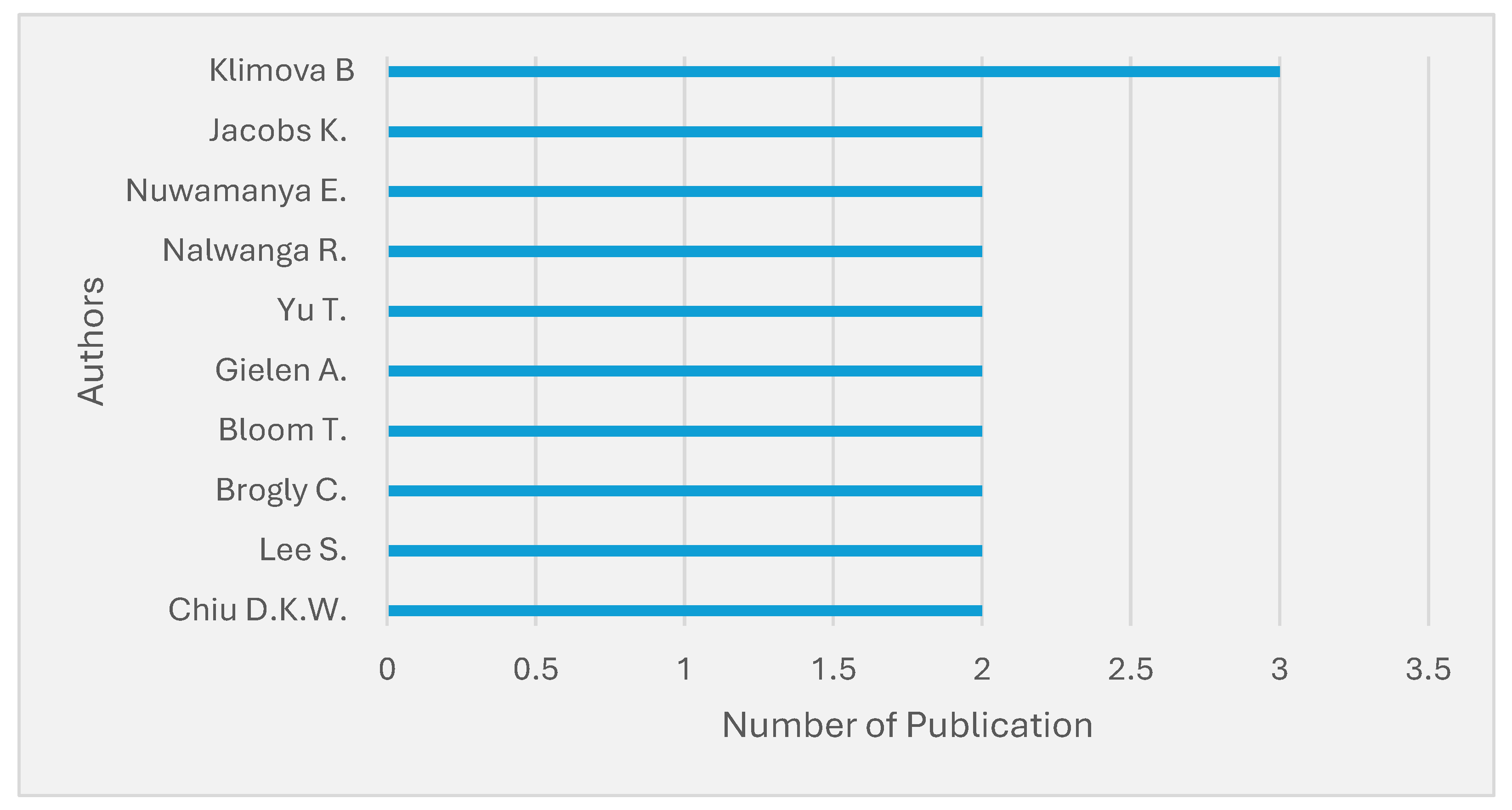
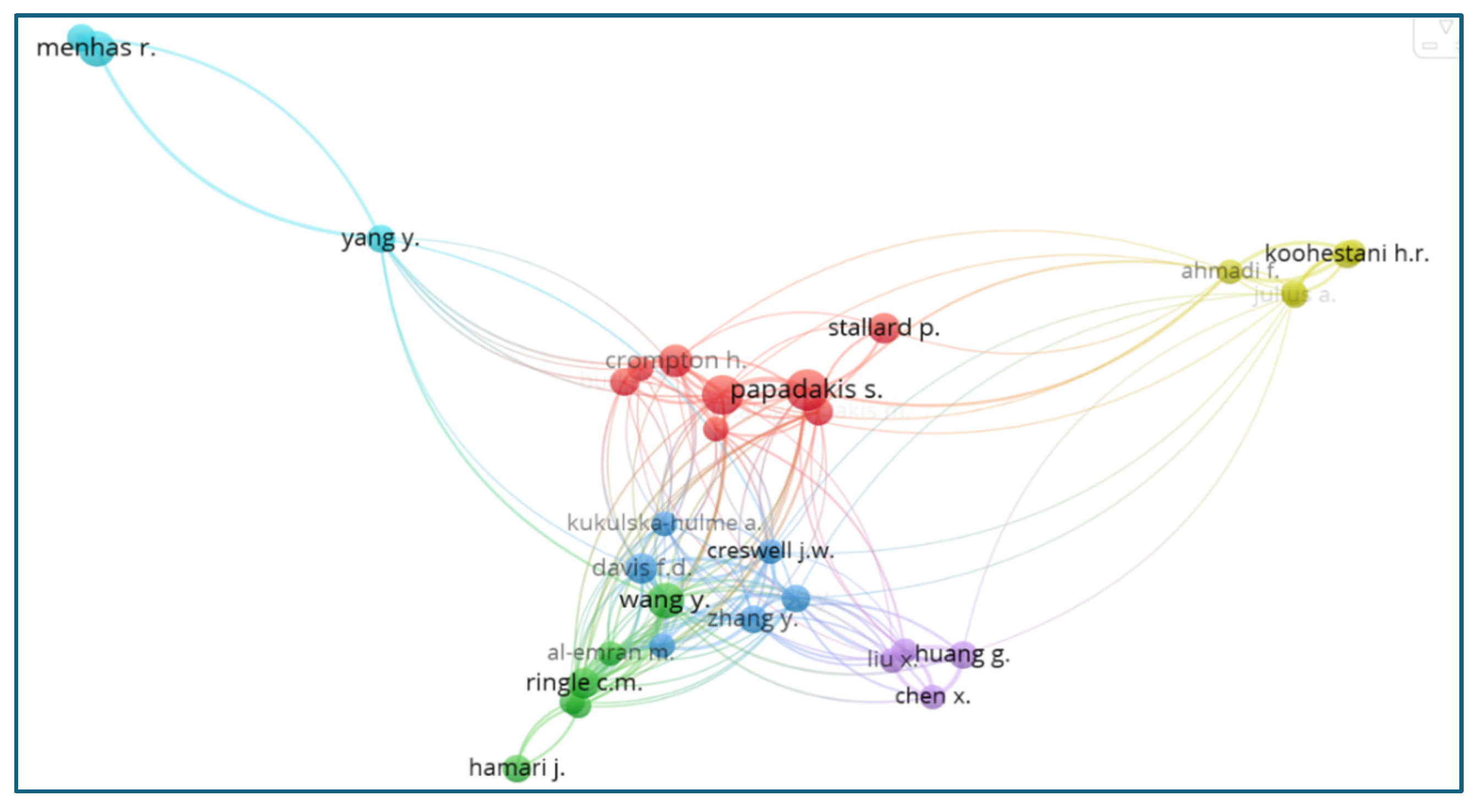
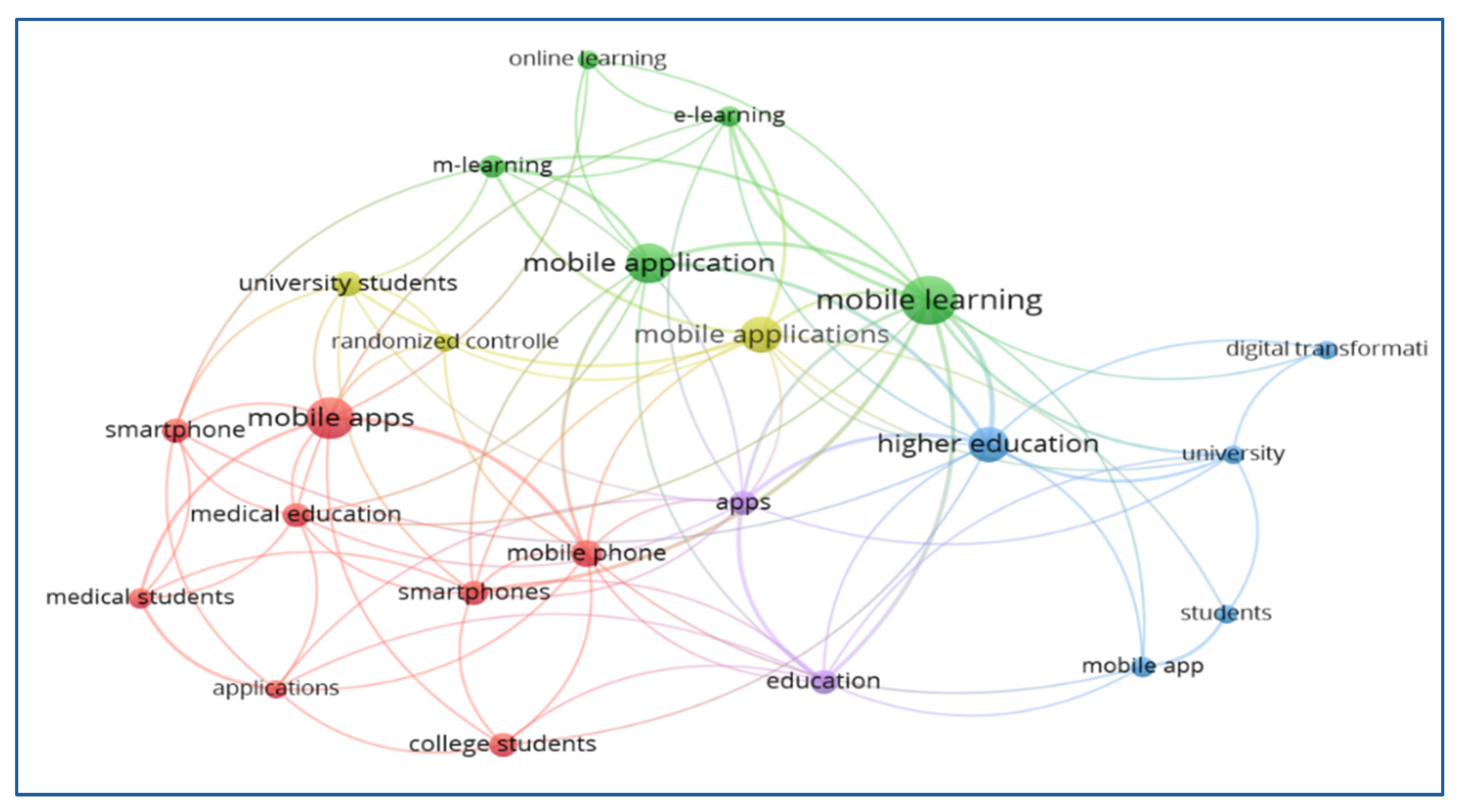

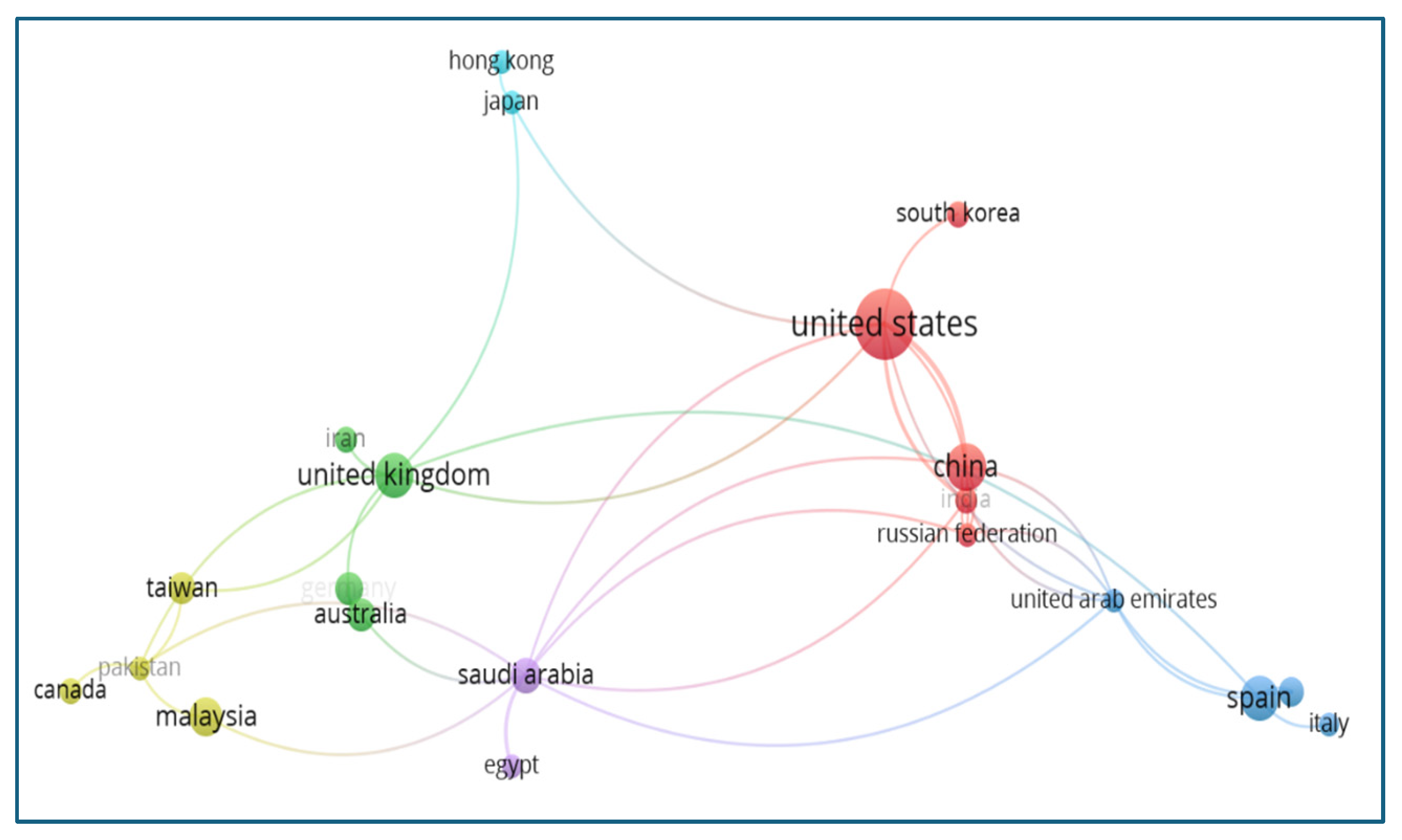
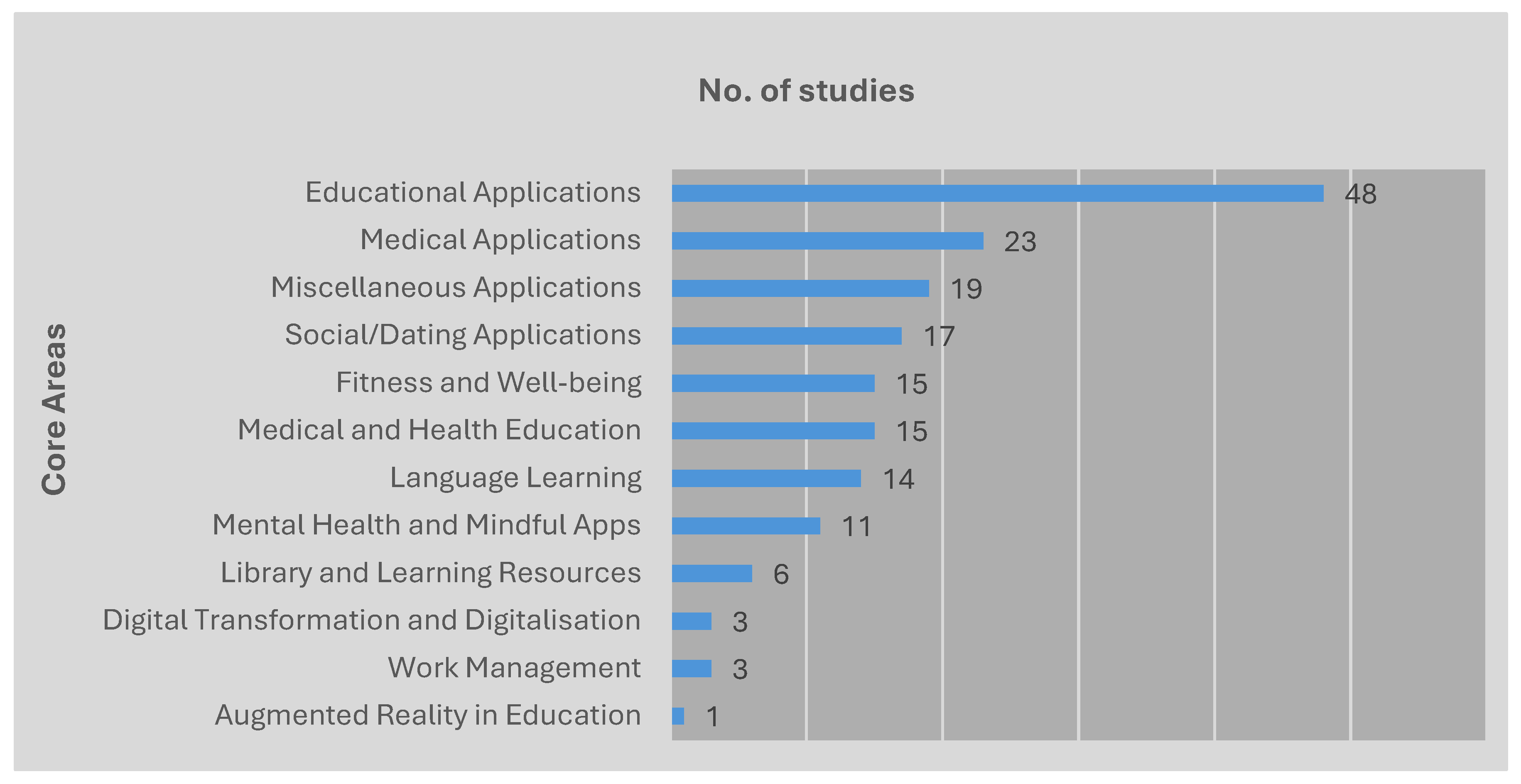
| Steps | Approach |
|---|---|
| Eligibility Criteria | Keywords: “Digital Transformation”, “Higher Education,” “mobile apps,” “I-Generations,” and “Gen Z”. |
| Source | Scopus database. |
| Search Strategy | Inclusion Criteria: Studies in Environmental Science, Social Science, Economics, Econometrics and Finance, Business, Management and Accounting, Medical, Engineering, Nursing, Development Studies, Medical Science and Technology. Articles published from 2014 to 2024, in English. Exclusion Criteria: (i) conference papers, review papers, editorials, book chapters, and papers in the press, and (ii) studies unrelated to mobile applications in higher learning institutions or universities. |
| Selection Process | Two reviewers screened the search results. The title, abstract, and keywords were reviewed manually and individually. Later, the final list was combined. |
| Data Collection Process | Data was collected manually from the database. Two reviewers collected and screened the data separately, then combined it. For the final list, the data were analyzed using Excel and VOSviewer software version 1.6.20 to examine and present different graphics of networking patterns. |
| Data items | The outcome of the study was recorded in the table and graph. |
| Study risk of bias assessment | Three reviewers worked independently to eliminate bias and combined the study results. |
| Effect measure | Percentile values were utilized to generate the effect measure. |
| Reporting bias assessment | To avoid any bias or missing results, the combined result was reviewed by each reviewer individually. |
| Certainty assessment | Results are compared with earlier studies to confirm the certainty assessment. |
| Paper Sources | Number of Papers | Local Citations |
|---|---|---|
| BMC Medical Education | 10 | 108 |
| JMIR mHealth and eHealth | 10 | 301 |
| Int Jr. of Interactive Mobile Technologies | 7 | 41 |
| Int. Jr. of Environmental Research and Public Health | 5 | 28 |
| Jr of Medical Internet Research | 5 | 134 |
| BMJ Open | 4 | 15 |
| Int Jr of Advanced Computer Science and Applications | 4 | 23 |
| Jr of American College Health | 4 | 71 |
| Author (Year) | Local Citations a | Global Citations b |
|---|---|---|
| Klimova (2019) [21] | 109 | 312 |
| Wai (2018) [22] | 101 | 190 |
| Briz-Ponce (2015) [23] | 93 | 213 |
| Briz-Ponce (2016) [24] | 89 | 187 |
| Yip (2021) [25] | 68 | 87 |
| Choi (2016) [26] | 62 | 119 |
| Marques (2021) [27] | 61 | 103 |
| Pal (2022) [28] | 60 | 115 |
| Chang (2021) [29] | 61 | 115 |
| Mccloud (2020) [30] | 58 | 90 |
| Keyword | Frequency | Keyword | Frequency |
|---|---|---|---|
| Mobile applications | 64 | Mobile phone | 10 |
| Mobile learning | 33 | University Students | 9 |
| Higher Education | 18 | Medical Education | 8 |
| Apps | 17 | College students | 8 |
| Smartphone | 16 | Mobile learning | 7 |
| Geographical Regions | Number of Papers | Citations | Total Link Strength |
|---|---|---|---|
| USA | 35 | 659 | 8 |
| China | 16 | 204 | 5 |
| UK | 14 | 199 | 5 |
| Spain | 14 | 229 | 3 |
| Malaysia | 11 | 269 | 1 |
| Saudi Arabia | 9 | 152 | 5 |
| Germany | 8 | 150 | 2 |
| Australia | 8 | 144 | 2 |
| Taiwan | 7 | 110 | 1 |
| Portugal | 6 | 100 | 2 |
Disclaimer/Publisher’s Note: The statements, opinions and data contained in all publications are solely those of the individual author(s) and contributor(s) and not of MDPI and/or the editor(s). MDPI and/or the editor(s) disclaim responsibility for any injury to people or property resulting from any ideas, methods, instructions or products referred to in the content. |
© 2025 by the authors. Licensee MDPI, Basel, Switzerland. This article is an open access article distributed under the terms and conditions of the Creative Commons Attribution (CC BY) license (https://creativecommons.org/licenses/by/4.0/).
Share and Cite
Subbarao, A.; Siddika, A.; Fathullah, M.A.; Sanwani, M.A.B. The Role of Mobile Applications in Shaping Digital Transformation in Higher Education Among Generation I: A Bibliographic Study. Information 2025, 16, 1026. https://doi.org/10.3390/info16121026
Subbarao A, Siddika A, Fathullah MA, Sanwani MAB. The Role of Mobile Applications in Shaping Digital Transformation in Higher Education Among Generation I: A Bibliographic Study. Information. 2025; 16(12):1026. https://doi.org/10.3390/info16121026
Chicago/Turabian StyleSubbarao, Anusuyah, Aysa Siddika, Muhammad Afif Fathullah, and Mohd Azizi Bin Sanwani. 2025. "The Role of Mobile Applications in Shaping Digital Transformation in Higher Education Among Generation I: A Bibliographic Study" Information 16, no. 12: 1026. https://doi.org/10.3390/info16121026
APA StyleSubbarao, A., Siddika, A., Fathullah, M. A., & Sanwani, M. A. B. (2025). The Role of Mobile Applications in Shaping Digital Transformation in Higher Education Among Generation I: A Bibliographic Study. Information, 16(12), 1026. https://doi.org/10.3390/info16121026






